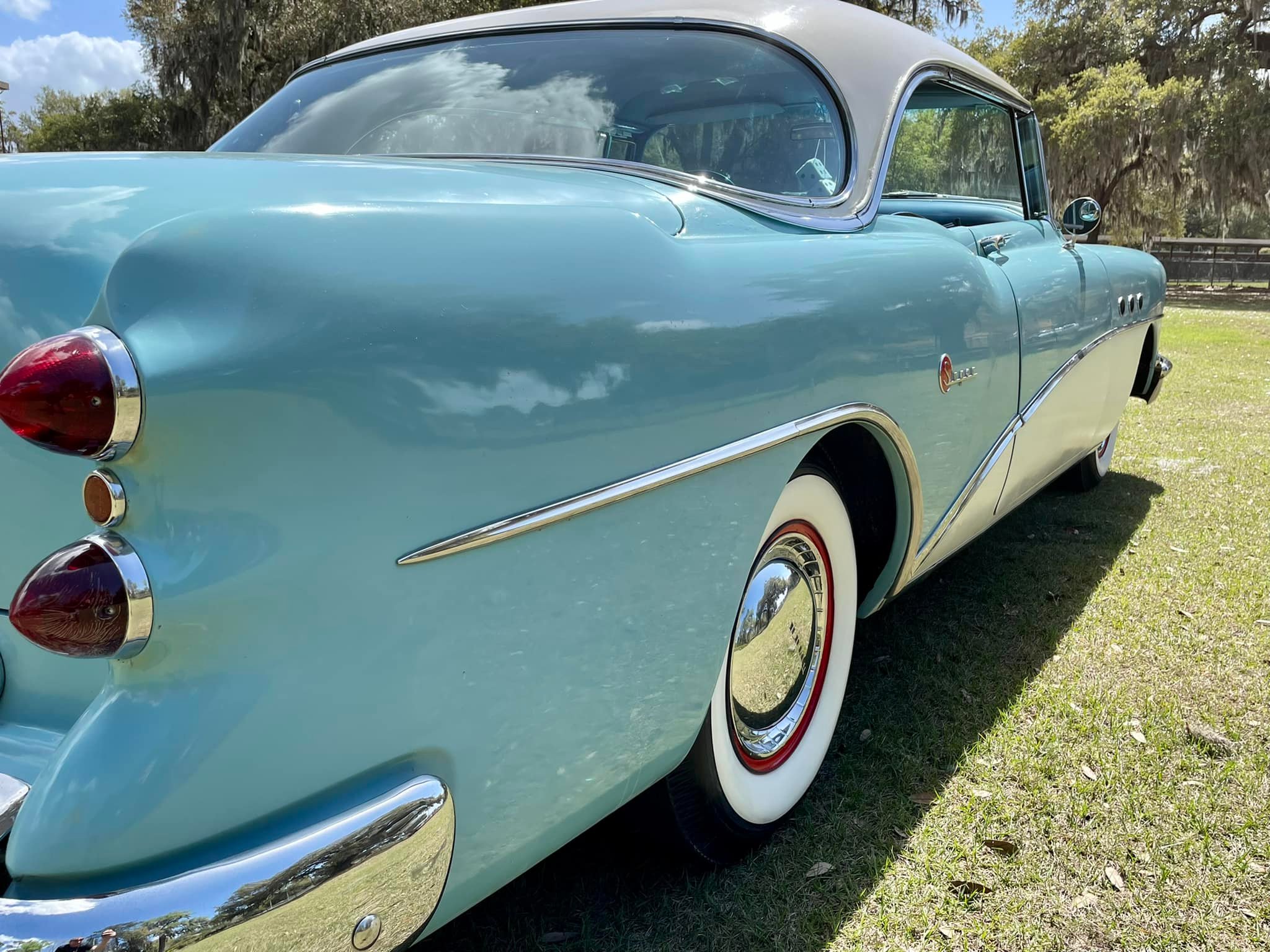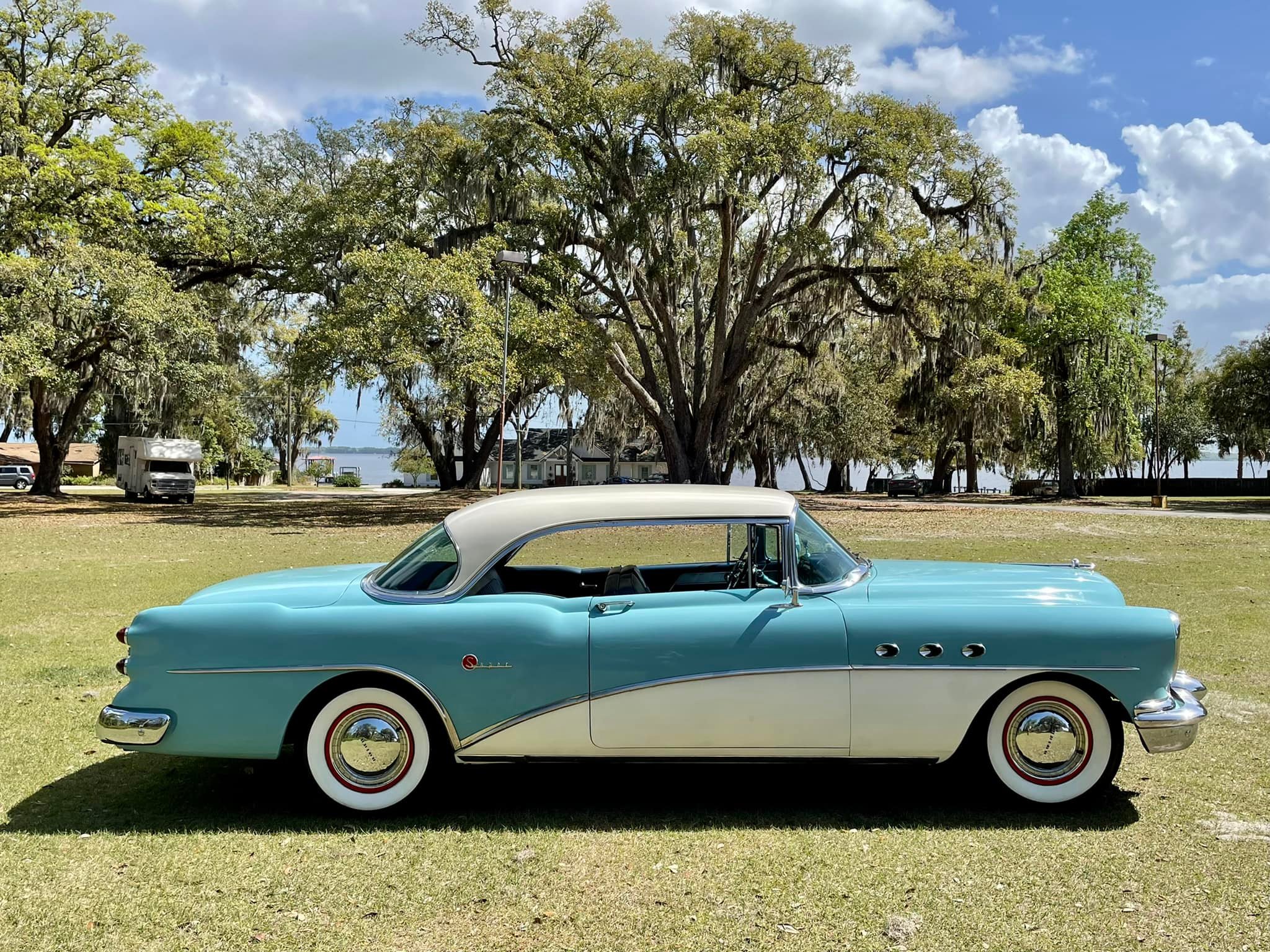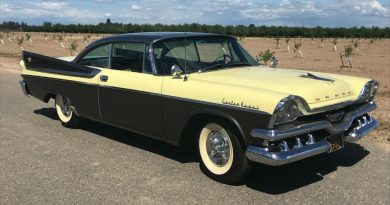1954 Buick Super 2 Door Hardtop
The Buick Super was one of Harley Earl’s personal favorite designs. Buick’s ad campaign pointed out that the car was ‘Super’ and that means superior in every respect,’ and was it ever. The return of Buick’s pre-war ‘factory hot rod’ with a sweeping side body line, strong face, and jet-age tail embodied everything that made the Mid-50’s GMs the pinnacle of American car design. The Super was a true high-performance car combining Roadmaster power with about half having three speed manual transmissions and the other half were equipped with Buick’s improved and more efficient Twin Turbine Dynaflow drive.

The Super could go 0-60 mph in 9. 8 seconds and cover the quarter mile in 17. 5 seconds, the sizzling Super with 200HP was not only fast off the line but they were also genuine 100mph cruisers. A 1955 Century hit 110 mph the Flying Mile competition at Daytona SpeedWeeks and in 1955 Buick took the only two wins in NASCAR Grand National stock car racing that it would see for many years.

The 1954 Buick Super was built on the larger Buick platform available for the year as was the Roadmaster and was powered by the same division’s largest engine, the Roadmaster 322 c. i. d. It is noteworthy that the smaller platform of the same generation Buick Century, combined even lighter weight with the same high horsepower 322 c. i. d. engine, and was appreciated by law enforcement agencies, many of whom used them for patrolling freeways and turnpikes across the nation where they were well suited for high speed pursuits.

Equipped with a Dyna-flow automatic transmission and period correct wire wheels riding on radial wide white wall tires, this Buick is a pleasure to drive. Always a West Coast car, this Super has stunning chrome, a gorgeous straight body and a very comfortable interior with its exclusive factory horizontal speedometer instrument panel.

The massive vertical-tooth grille makes this car recognizable as a Buick from half a mile away. The headlights and parking lights are housed together in a downward pointing oval. The wrap-around windshield was the beginning of a styling fad that swept through the industry from the mid to late ‘50s. And the raised portion of the rear fenders foreshadowed the tailfin craze that dominated the rest of the decade.




